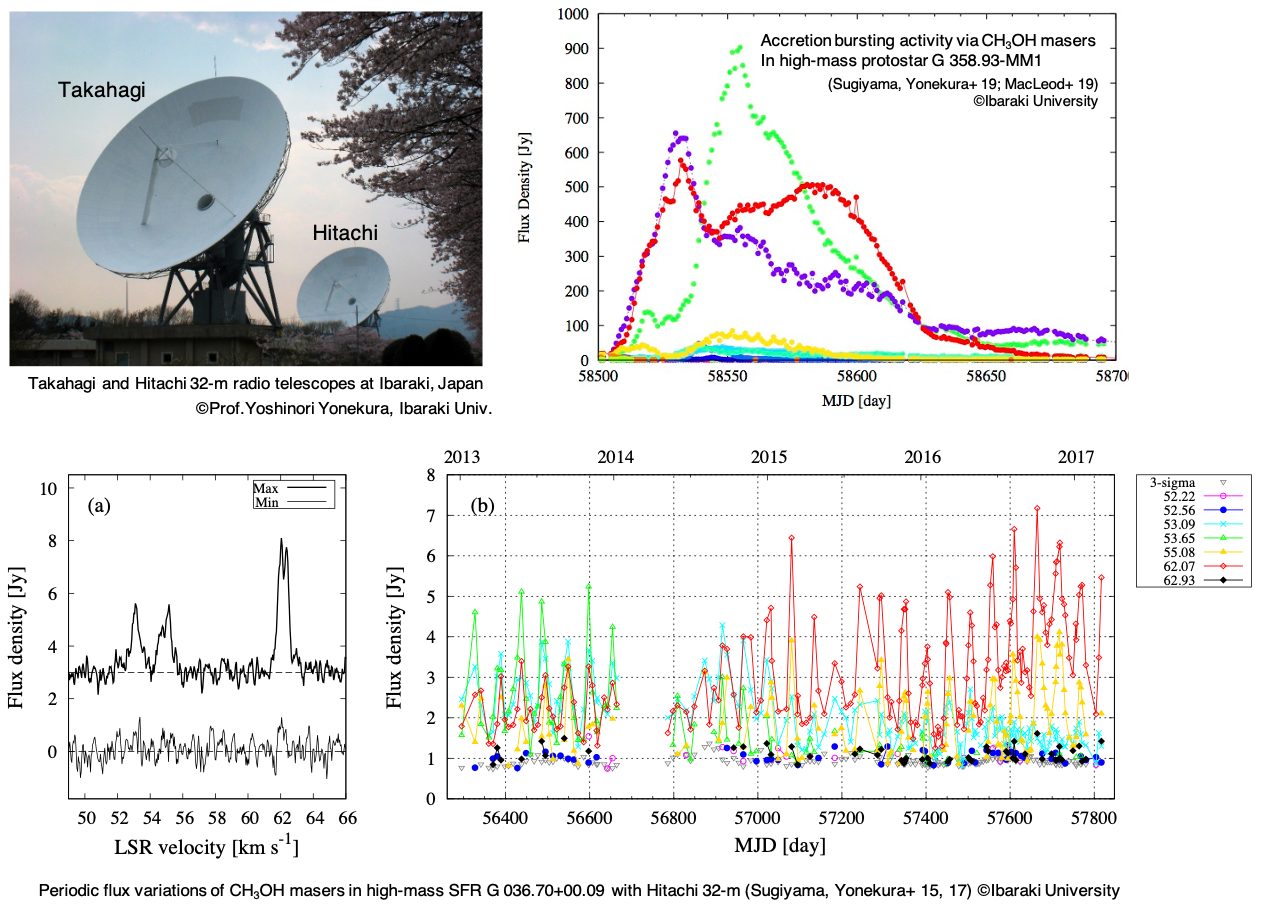Daily Image
03-06-2021Colloquium: Journey with Maser Variability to Research High-mass Star Formation and Key Science Topics with Forthcoming 40-m Thai National Radio Telescope
| Submitter: | Koichiro Sugiyama |
| Description: | Cosmic masers (Microwave Amplification by Stimulated Emission of Radiation) are one of the brightest radio emitters in the interstellar medium, and are detected from various molecules: OH, CH3OH, H2O, NH3, SiO, H2CO, as well as recombination lines. Thanks to their characteristics (compact spatial structure, high brightness, and highly variable flux density), masers enable us to make unique observations, such as measuring the 3-D velocity structures of disk/outflow/jet surrounding a star. In this talk, I am going to focus mainly on presenting one of the unique studies that addresses physical phenomena associated with a massive protostar on the early evolutionary stage of high-mass star formation which has a spatially tiny radius of smaller than 1 astronomical unit (AU). The study is based on characteristic flux variability of the OH, CH3OH and H2O masers, revealed in a high-cadence flux monitoring. In addition, I will briefly introduce the key science topics potentially achieved with the forthcoming 40-m Thai National Radio Telescope (TNRT). The latter was presented in detail in the recent talk by Dr. Phrudth Jaroenjittichai on May 6, 2021. High-mass star formation research via observing masers is one of the key topics of the telescopes' science program. |
| Copyright: | Image credit: Koichiro Sugiyama |
| Tweet |  |
